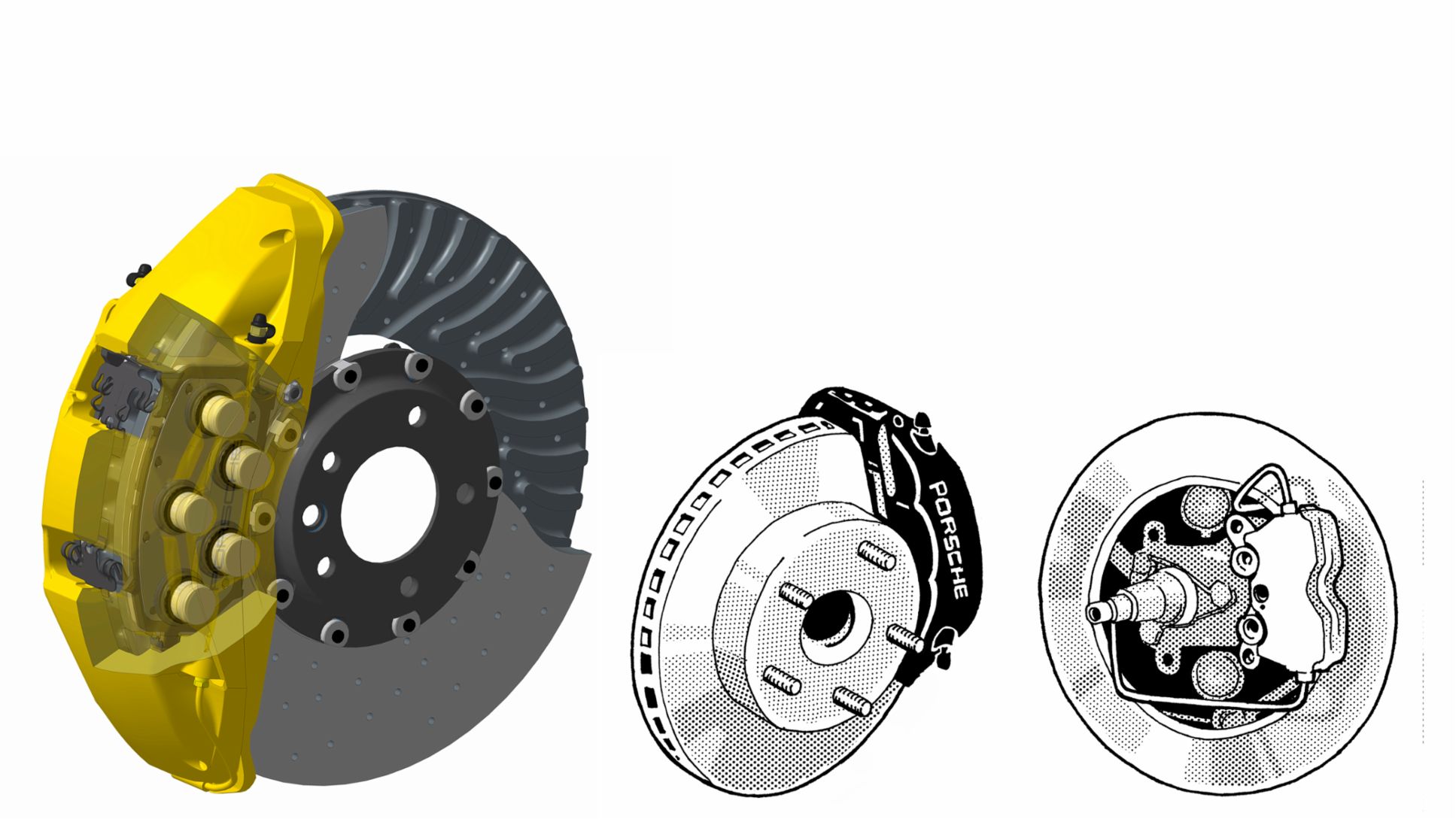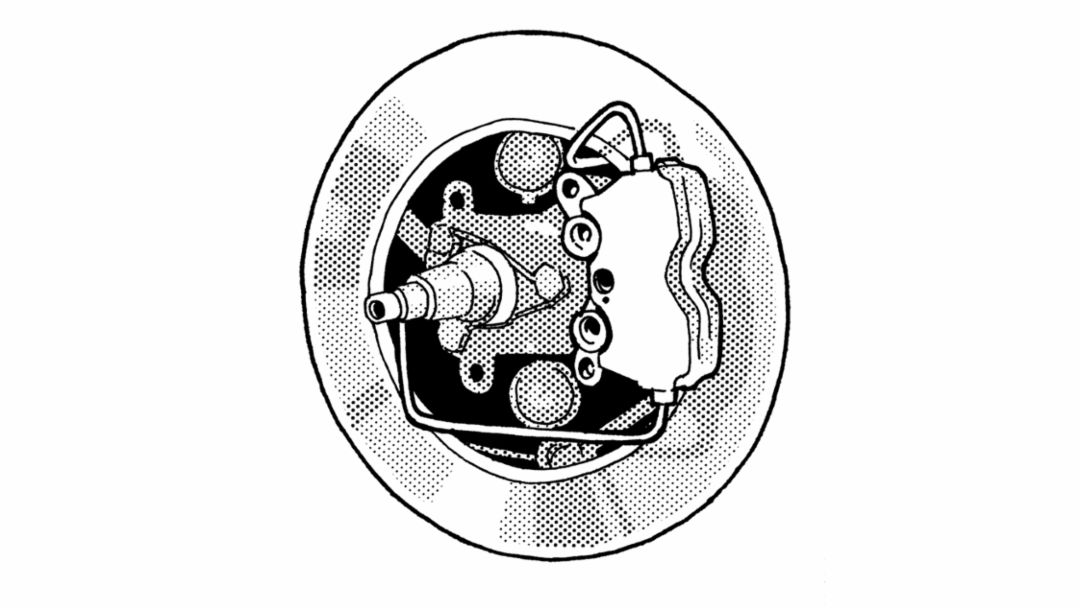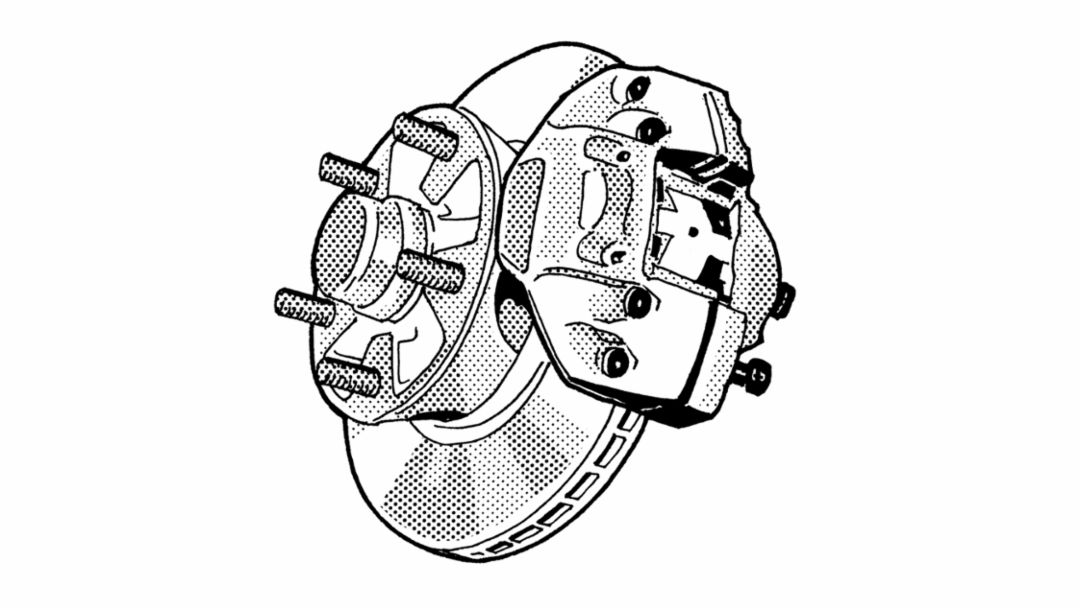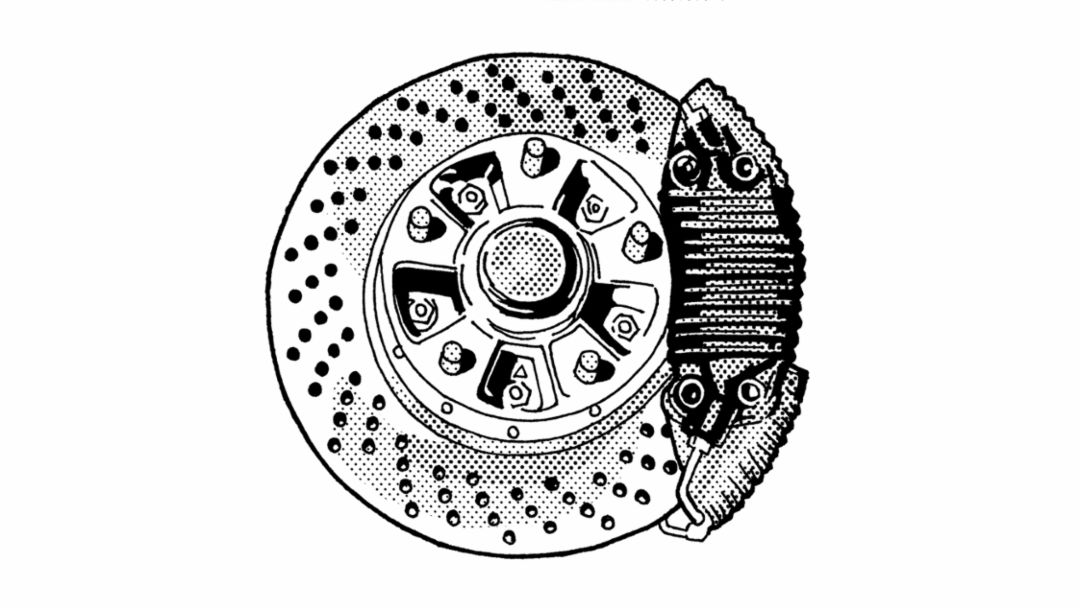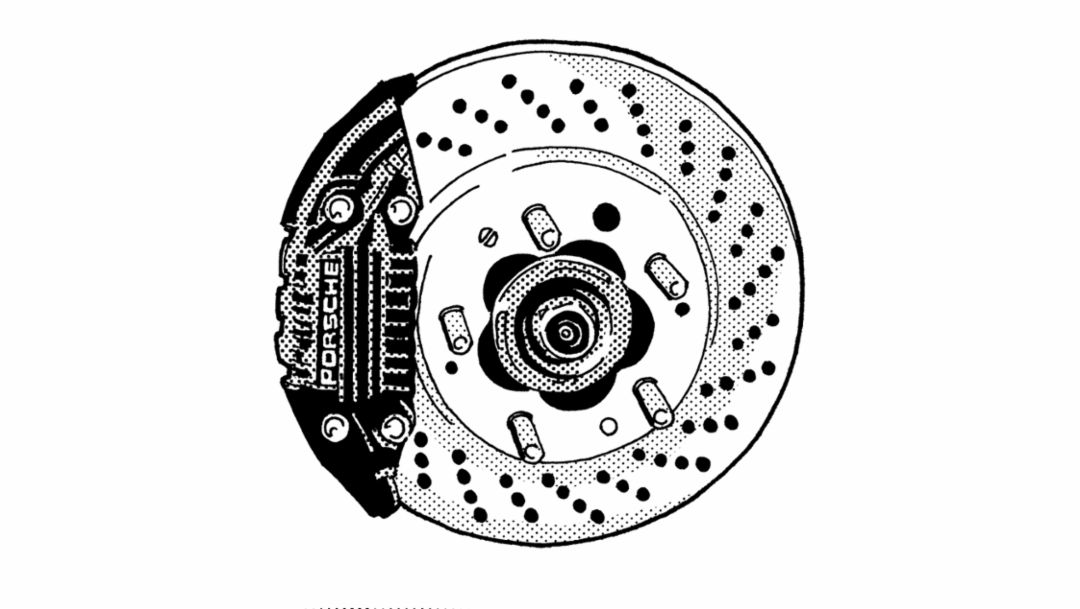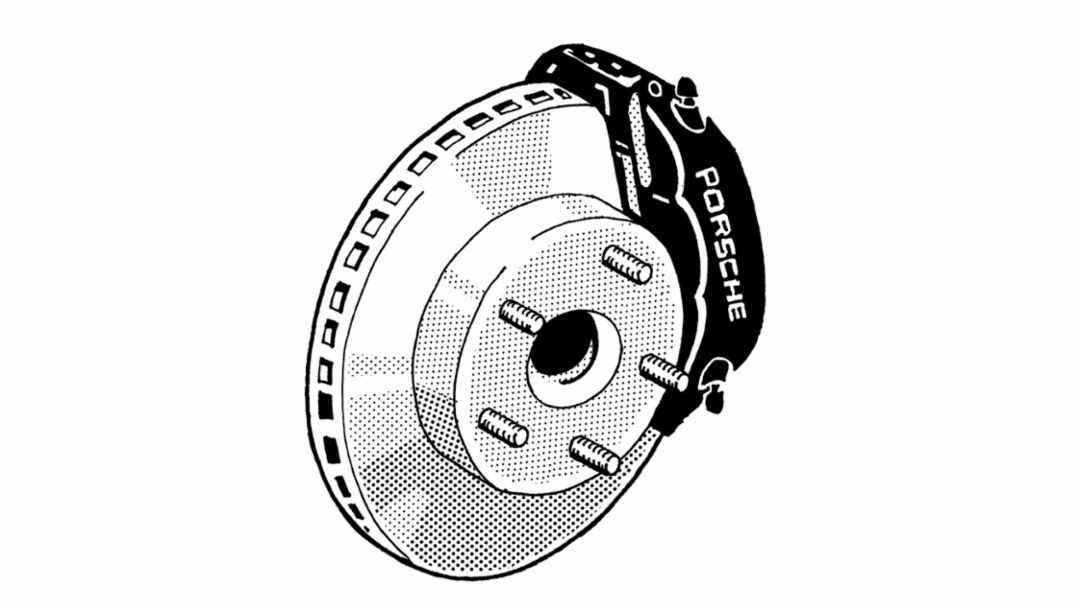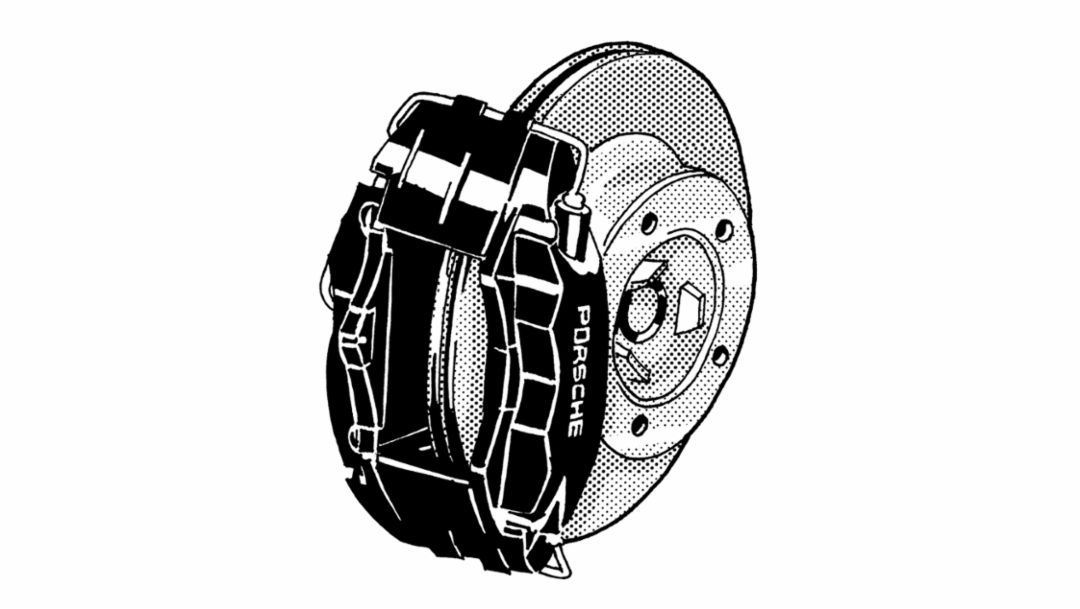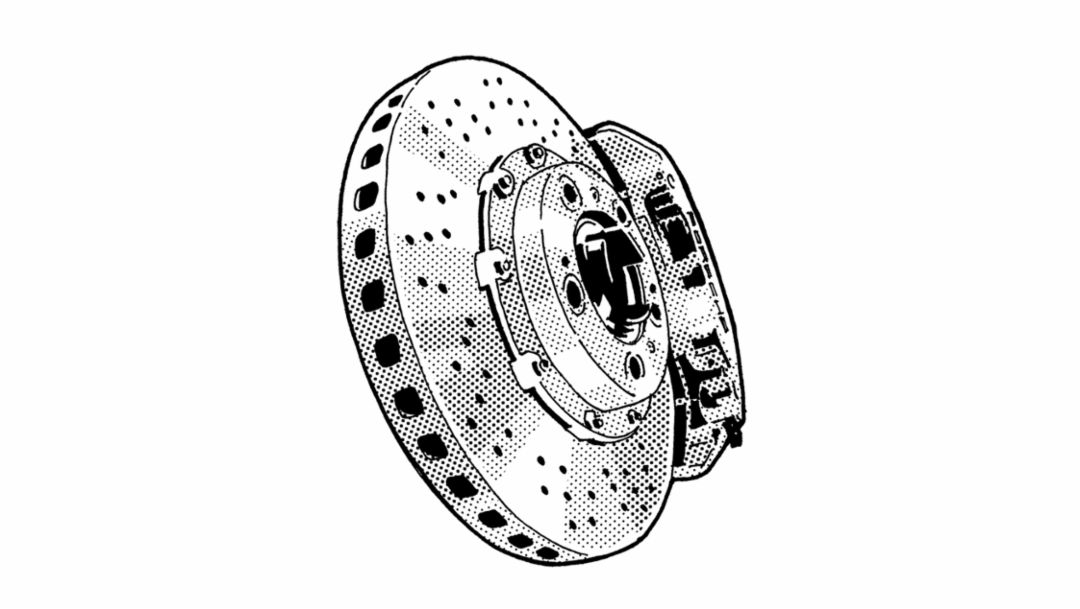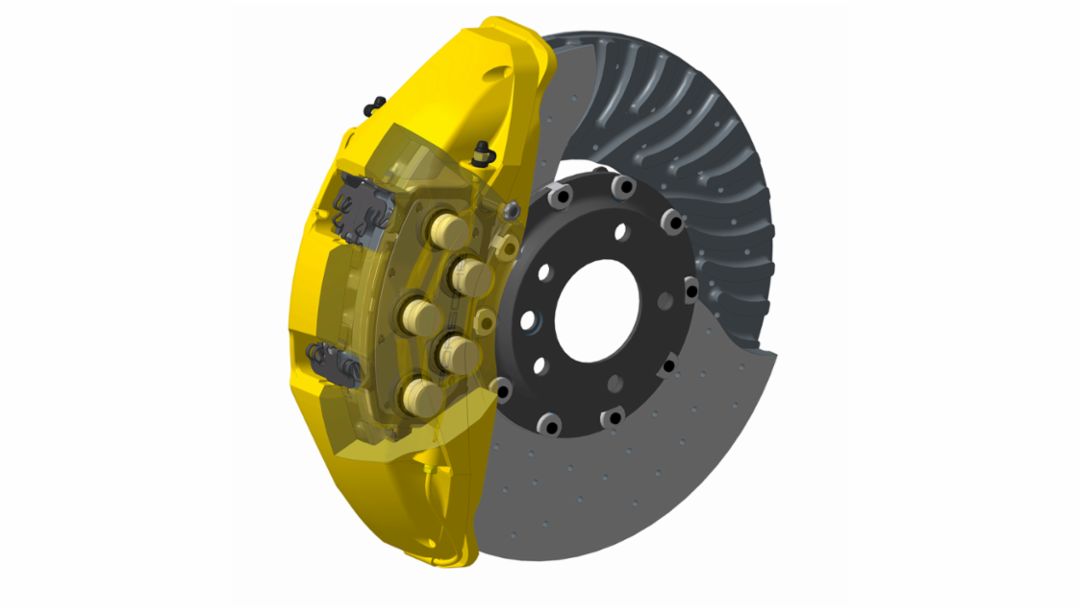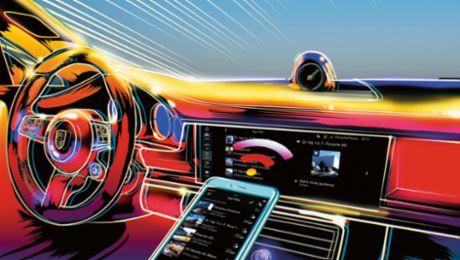In spite of all foresight, sometimes only a spirited stomp on the brake pedal will do the trick. What happens then in a Porsche impresses drivers time and again. This brute-force, almost surreal braking experience is no coincidence, but—ever since the first series Porsche with disc brakes, the 356 B Carrera 2 in 1962—Porsche philosophy in action.
1962
ANNULAR DISC BRAKES are used in the 356 B Carrera 2. The brake calipers grip the discs from the inside, allowing larger disc diameters.
1966
INTERNALLY VENTED BRAKE DISCS make their premiere as standard equipment in the 911 S—front and rear. The cooling openings between the friction surfaces dissipate the heat generated while braking.
1974
CROSS-DRILLED BRAKE DISCS are a part of the specific equipment of the 911 Carrera 3.0. The holes ensure that brake pad grit and water are dispersed, which improves responsiveness particularly in wet weather.
1977
FOUR-PISTON BRAKE CALIPERS ensure that the brake performance in the 911 Turbo 3.3 keeps pace with the increased engine power. The technology comes from the 917/30 race car.
1983
ANTI-LOCK BRAKES (ABS) first appear as an option for the 928 S. The system prevents the wheels from locking during full braking—the car retains its steerability.
1996
MONOBLOC ALUMINUM BRAKE CALIPERS come standard in the first Boxster generation. The four-piston monobloc fixed calipers are manufactured from a single piece for improved heat dispersion.
2001
The PCCB (Porsche Ceramic Composite Brake) celebrates its debut in the 911 Turbo and 911 GT2. The ceramic brakes are 50 percent lighter than gray cast-iron discs with comparable braking power. This advance reduces the unsprung mass—and enhances driving comfort and brake performance.
2015
TEN-PISTON BRAKE CALIPERS are being used for the first time on the front axle of the Porsche Cayenne Turbo S. In conjunction with the ceramic brake discs with a diameter of 420 millimeters (also standard), they ensure the highest fading stability and exceptional responsiveness even at high speeds.
Info
Text first published in the Porsche customer magazine Christophorus, No. 371
Illustrations by Bernd Schifferdecker
Consumption data
Cayenne Turbo S: Combined fuel consumption: 11.5 l/100 km; CO₂ emissions (combined): 267 g/km
